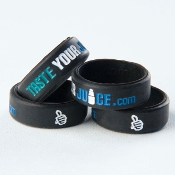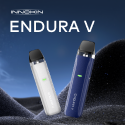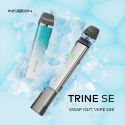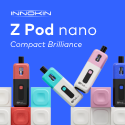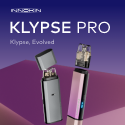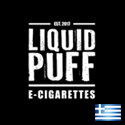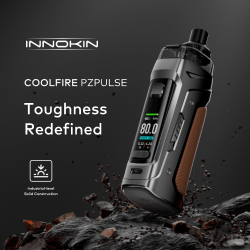UNSALTED ON ICE ROUND 2!!
Unsalted! Home of the #1 Best Selling Flavor in the Unsalted Line, Watermelon Peach, now brings you the next round of Unsalted on Ice flavors for you to enjoy and NOT SMOKE!!
These new flavors are now available in Canada at Dash Vapes RIGHT NOW and will soon be available in Greece, & the rest of the world though Dash Vapes EU.
We thank you for your continued support and hope you love them!
NEWEST COCHRANE REVIEW SHOWS EVIDENCE THAT NICOTINE E-CIGS MORE EFFECTIVE THAN PHARMA NRT
“Research led by the University of Oxford, and funded by Cancer Research UK, has found the strongest evidence yet that e-cigarettes, also known as ‘vapes’, help people to quit smoking better than traditional nicotine replacement therapies, such as patches and chewing gums. New evidence published today in the Cochrane Library finds high certainty evidence that people are more likely to stop smoking for at least six months using nicotine e-cigarettes, or ‘vapes’, than using nicotine replacement therapies, such as patches and gums. Data from the review showed that if six in 100 people quit by using nicotine replacement therapy, eight to twelve would quit by using electronic cigarettes containing nicotine. Dr Jamie Hartmann-Boyce, Associate Professor at the University of Oxford, Editor of the Cochrane Tobacco Addiction Group, and an author of the new publication, said: “For the first time, this has given us high-certainty evidence that e-cigarettes are even more effective at helping people to quit smoking than traditional nicotine replacement therapies, like patches or gums.””
THE DP SHOW REPLAY – SPECIAL MIDTERM ERECTION COVERAGE! CONTEST IN HERE!
THE DP SHOW REPLAY – SPECIAL MIDTERM ERECTION COVERAGE!
Quite possibly some of the most profound, fascinating, and important election coverage on the net! 😉
What’s on the agenda for this show?
We will be talking some politics.
Finding out the latest winners.
Taking a look at the Innokin Innobar.
Some general bullshitting and ball busting.
Perhaps some shots? 🙂
Finding out the latest member of the PFPWTHSW list. – CONTEST HERE!!!
All that PLUS a special surprise guest!
Get your Unsalted from Peggy HERE!
Links from the show:
Trade Association USVA Sues FDA
USVA (United States Vaping Association)
The Innokin Innobar C1
TOMORROW (11/8/22) @ 5PM EST ON THE DP SHOW – SPECIAL ELECTION DAY SHOW
What’s on the agenda for this show?
We will be talking some politics.
Finding out the latest winners.
Taking a look at the Innokin Innobar.
Some general bullshitting and ball busting.
Perhaps some shots? 🙂
Finding out the latest member of Phil’s political “smash” list.
All that PLUS a special surprise guest!
Since Dimitris is in Greece, this will be an early 5pm EST show.
LATEST FROM REGULATOR WATCH: Crossed The Line | Using Coercion & Force ‘For Your Own Good’
From Brent Stafford at Regulator Watch
Hard-hitting columnist and public health analyst reveals motivations and tactics behind the most egregious efforts to destroy vaping.
*Guest: Michelle Minton, Senior Fellow, Competitive Enterprise Institute
Original Airdate: May 12, 2022
Posted: November 7, 2022
Watch RegWatch on GFN.TV every second Thursday at GFN.TV
Make RegWatch happen, go to: support.regulatorwatch.com
CATCHING UP WITH REGULATOR WATCH: Ground Zero | U.S. War on Vaping Mars Global Debate | Pt. 2 Alex Wodak Interview
From Brent Stafford at Regulator Watch
The American public health establishment continues its war on vaping while the rest of the world suffers an onslaught of misinformation about potential health risks and benefits.
In part two of our interview with Dr. Alex Wodak, physician and harm reduction pioneer, we dig deep into public health’s strident opposition to tobacco harm reduction and discuss whether it may change.
Will the war on vaping end?
Find out only on RegWatch by RegulatorWatch.com.
Released: October 23, 2022
Produced by Brent Stafford
This episode is supported by DEMAND VAPE
Make RegWatch happen, go to: support.regulatorwatch.com
THE DP SHOW REPLAY – RECAPS – VAPEXPO PARIS & HURRICANE IAN
In this show we recap VapExpo Paris and I tell the story of Hurricane Ian from my Perspective.
We also find out who won the custom Sceptre and some surprise Sceptre’s as well!
EXPERTS AGREE THAT MICE ARE NOT HUMANS & THAT MICE SHOULD NOT VAPE
““Vaping e-liquids can disrupt heart’s rhythm” report newspapers covering a new study, but fail to emphasise the fundamental point that it involved poisoning mice. A genuine tobacco harm reduction expert pointed out that the only important message is that “owners of pet mice should not allow their mice to use e-cigarettes”. Professor Jacob George, Chair of Cardiovascular Medicine and Therapeutics at University of Dundee Medical School, said: “The metabolism of mice is very different from humans and any extrapolation to overall, long-term human health is, frankly, guesswork at best. If this was indeed true, given the significant numbers of vapers worldwide, we would have expected to see an explosion in cardiac arrhythmia cases which we are not seeing in clinical practice, at all.“
Professor Peter Hajek, Director of the Tobacco Dependence Research Unit, Queen Mary University of London, added: “There are several problems with generalising the findings to humans. Vapers are not exposed to any significant levels of acrolein because overheated e-liquid has an unpleasant taste and so this is avoided. The study used exposure levels of the other chemicals that are tolerated by humans, but the same doses can be distressing to much smaller mammals with much more sensitive sense of smell and very different tolerance of drug effects. It would be odd if animals exposed to aversive stimulation did not show a cardiovascular response! The reason for conducting the study in mice is unclear. Animal models are used when the experiment cannot be conducted in humans, but there are no barriers to comparing heart rate and ECG responses to e-cigarette components and to smoking in humans.””
ARTICLE LINK: Not Nice Mice Research
SCIENTISTS REBUKE MISLEADING SCHLOCK JUNK SCIENCE U.S. ANTI-VAPING STUDY
“US research that has said vaping can lead to “worrisome changes” in blood pressure and heart function has drawn criticism from British scientists who told the evidence remains that e-cigarettes are significantly safer than smoking. Senior academics in the UK expressed dismay and incredulity after suggestions by a US team of researchers that measurements of heart rate and blood pressure cast doubt on findings that smoking is much more dangerous than vaping.
UK-based scientists were critical of how the research, at abstract stage, had been introduced. Professor Peter Hajek, from the Wolfson Institute of Population Health at Queen Mary University of London, was among them and told the US researchers had been “irresponsible”. He said: “Like a number of such previous reports, the heart rate part is just noting a well-known short-term effect of nicotine that accompanies all types of stimulation. The same effect is generated by watching a thriller or a football match or sitting an exam. Drinking a cup of coffee actually produces a larger response of much longer duration.”
ARTICLE LINK: Why UK scientists are calling new research on the effects of e-cigarettes ‘irresponsible’
TOMORROW NIGHT AT 6PM EST – THE DP SHOW RETURNS – VAPEXPO PARIS & HURRICANE IAN
On tomorrow’s show we recap VapExpo Paris and I tell the story of Hurricane Ian from my perspective.
We also find out who won the custom Sceptre and some surprise Sceptre’s as well!
Big question… will my internet remain up and stable? Tune in and find out!
Since Dimitris is in Greece, this will be an early 6pm EST show.






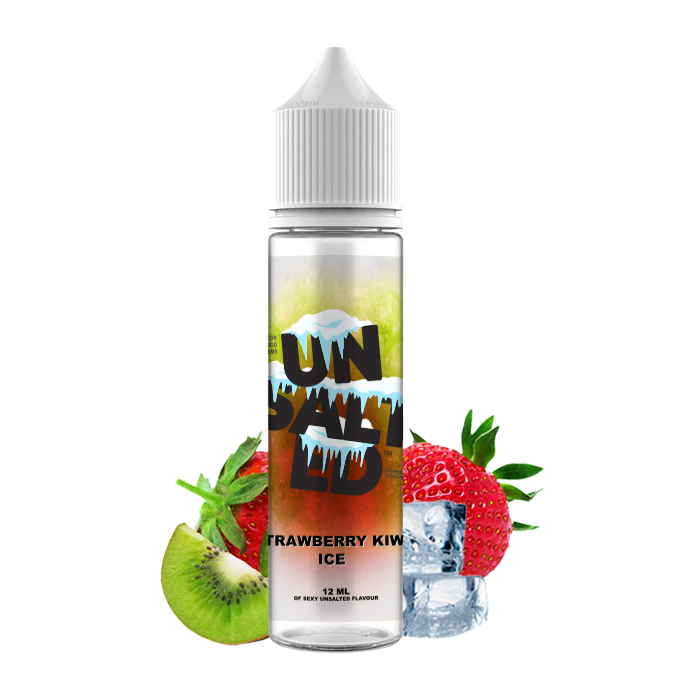
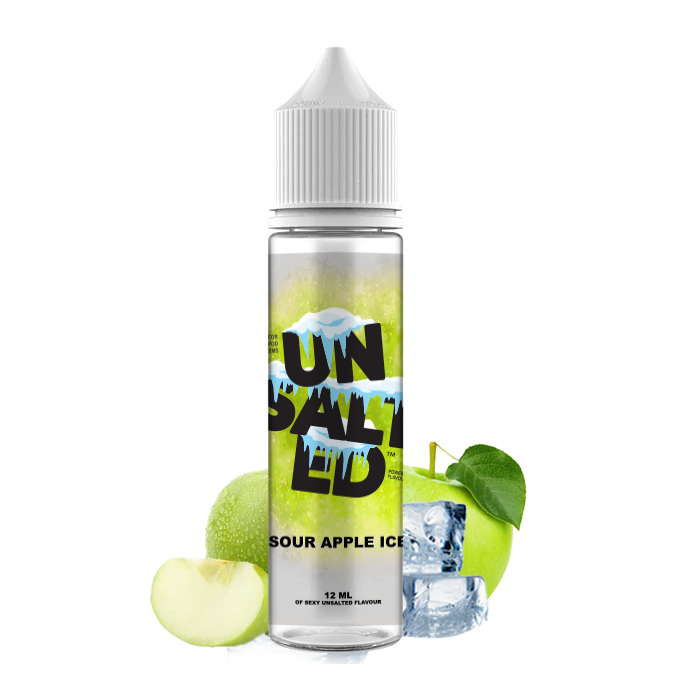









 Store
Store
